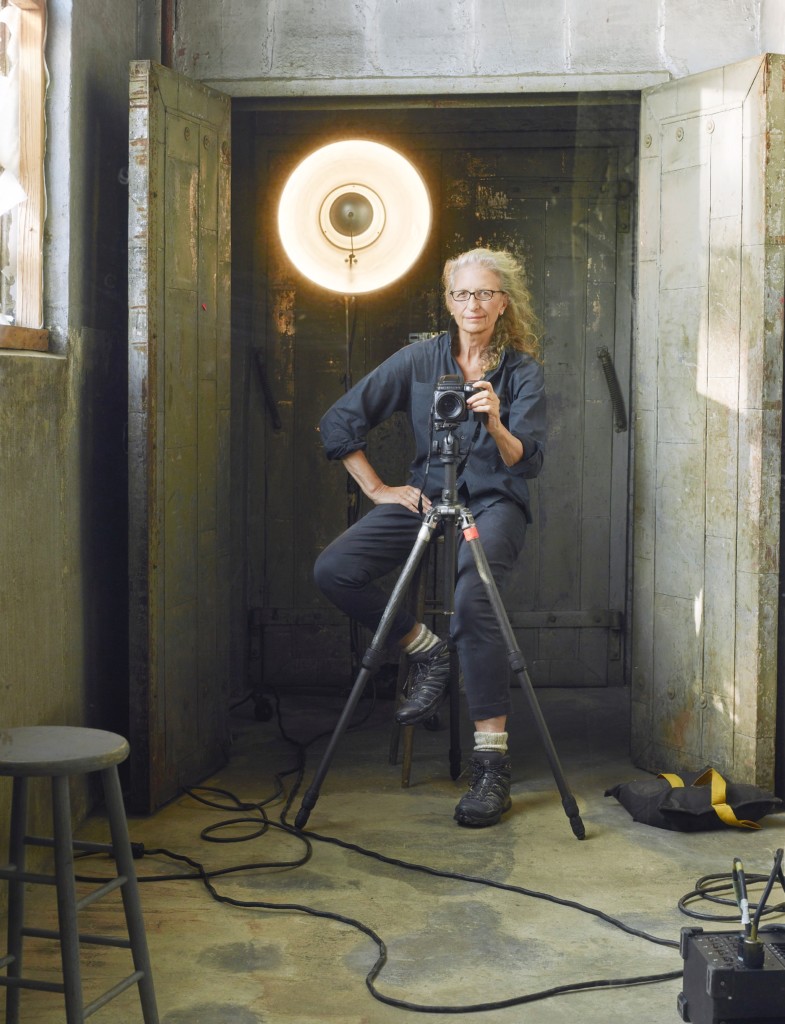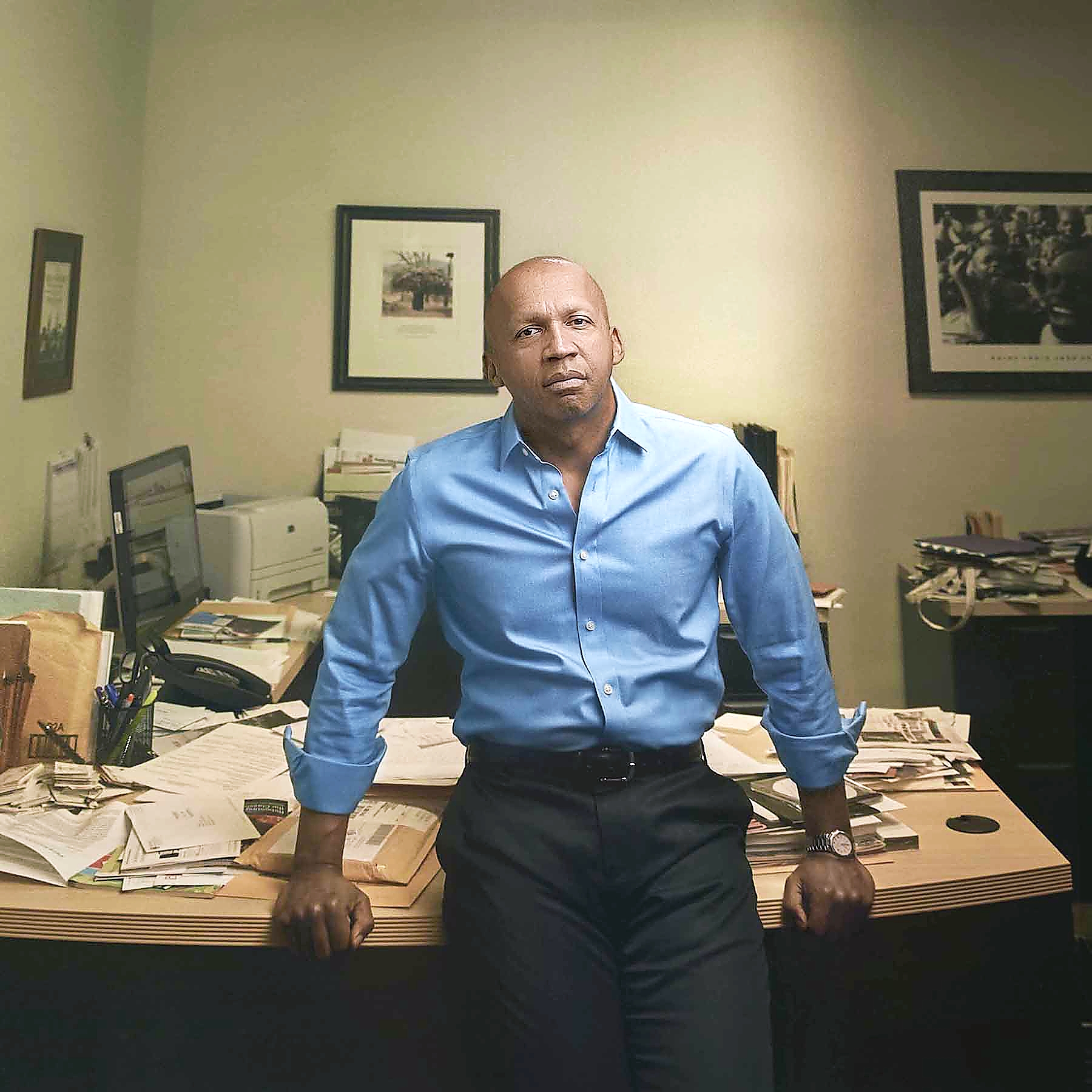
“Self Portrait, Brooklyn, N.Y.,” 2017. Photo courtesy of the artist ©Annie Leibovitz.
By Karla K. Albertson; All photos by Annie Leibovitz
BENTONVILLE, ARK. — Photography is the point where artistry intersects with the highest level of technical skill. The ability to do it well can be considered a divine gift, but on a practical level it leads to well-earned human recognition and rewards. Thus, “Annie Leibovitz at Work” is a perfect title for the new exhibition organized by the Crystal Bridges Museum of American Art.
As most know, Leibovitz is an artist who takes extraordinary portraits. Born in 1949 in Waterbury, Conn., she went to study painting at the San Francisco Art Institute but changed majors. Her inspirational use of the camera was so apparent that by 1973, she was capturing famous faces as the chief photographer at Rolling Stone. People grabbed new issues to see who was on the cover, and unforgettable examples from that era are included in the show.
The artist continued to produce memorable portraits and expansive fashion shoots during associations with Vanity Fair and Vogue. The photo of Demi Moore in her pregnancy on the August 1991 cover of the former achieved worldwide recognition. The same year her photographs went on display at the National Portrait Gallery in Washington, Leibovitz was the second living portraitist and first woman to achieve that honor.

“Alexandra Fuller, Kelly, Wyo.,” 2016. Photo courtesy of the artist ©Annie Leibovitz.
As she worked over the decades, the artist’s individual images have been gathered into published collections, some focusing on the work of certain time spans such as Annie Leibovitz: The Early Years, 1970-1983 (Taschen, 2018). Others gather related subject matter, such as Annie Leibovitz: American Music (Random House, 2003).
Fashion is covered in the more recent book: Wonderland (Phaidon, 2021) which has a contribution by Vogue editor Anna Wintour. Patricia Morrisroe wrote an article about it for The New York Times titled, “Annie Leibovitz, the Un-Fashion Photographer.” Always dressed most casually in her self-portraits, the artist — nonetheless — can squeeze the best out of haute couture. As the journalist pays tribute: “The 341 images in the book bear the hallmarks of the Leibovitz style — masterly use of color, theatrical staging, artful interplay between artificial and natural light — but the best of them lives up to the book’s title. They are enchanting, wrapped in a visual narrative that showcases her gifts as a powerful storyteller.”
So how did Leibovitz get to Arkansas? During the pre-show build-up, the museum explained the involvement of Alice Walton, daughter of Sam Walton, and the driving force behind the museum’s creation. “When Leibovitz first came to Bentonville to photograph Alice Walton, Crystal Bridges invited her to create something for the museum, offering her the opportunity to make new work without conditions or limitations; [she says]: ‘They didn’t ask what I wanted to photograph or where I wanted to go. I realized that I wanted to update my work. It was an opportunity to do something that I couldn’t do for anyone else. The strength of my work is seeing the pictures together, like brothers and sisters. That’s what makes it interesting. It’s full of history.’”

“Bruce Springsteen on tour, Paris,” 2016. ©Annie Leibovitz.
Antiques and The Arts Weekly talked with Alejo Benedetti, acting curator of contemporary art at Crystal Bridges, who said more about the show’s origins: “The reality is, it came from Annie. She was here, she was actually doing what ended up being a really lovely photograph of Alice [Walton], and it’s a photo that will be included in the show. And there was a conversation that started, ‘would you be interested in doing a commission and then an exhibition coming out of this commission?’ It all happened very organically, and it started with that initial photo of Alice.” The museum will retain 25 new works that will join the permanent collection.
As the show is installed, Benedetti noted, “It’s exciting because, when folks walk through, there are the favorites that everybody knows — like John and Yoko or the Rolling Stones on tour in 1975. These are iconic photos — when we think about these figures from history, the image that shows up in your brain is actually the one by Annie Leibowitz. So that is very special to be able to see those in the show.”
He continued, “But what I like when I’m walking through are some that are not as well known. Few know that she photographed at the Apollo 17 launch (December 7, 1972), the last manned trip to the moon. Those are wonderful, and they’re in the show. Part of what I really like about the show is that it’s able to play between the famous images and those that are lesser known.”

“Patti Smith, Electric Lady Studios, New York City,” 2007. ©Annie Leibovitz.
The photographs are installed in the rooms of the museum’s temporary exhibition space: “Folks will be able to come and linger with images — but what’s so exciting about this particular exhibition is that Annie herself has put so much of her time and her vision into this. You get a sense of her process. How she makes links between different individual images. How she groups them together. How she, throughout her career, has been thinking across time. Things she picked up working for Rolling Stone, the journalistic photography she was doing, continues to have ripples in the work she does today. In the show, people will be able to see how that affects Annie’s mind at work.”
Visitors will be dazzled by the diversity of subjects on display, much more than just fashion and music: Cindy Sherman, Lizzo, LeBron James, Presidents Obama and Biden, Governor Sarah Huckabee Sanders, Rihanna, Dolly Parton, Shonda Rhimes, Tom Ford and Justice Ketanji Brown Jackson. The images in the show are seen in prints on paper and on high-tech digital display screens. On the website was a revealing quote by Leibovitz: “When I say I want to photograph someone, what it really means is that I’d like to know them.” Benedetti concluded: “When we open to the public, that’s an exciting moment, to be able to celebrate and share what we’ve been working on for so long.” The show will celebrate its kickoff with The Party on September 14, and a September 15 lecture by Leibovitz has sold out quickly. “We’re honored to showcase the exceptional work of Annie Leibovitz, an artist with an extraordinary vision and legacy,” said Olivia Walton, board chair for Crystal Bridges Museum of American Art. “Annie’s photographs capture our nation’s diverse culture, history, and people, while serving as a powerful reflection of the American experience. As a museum situated in the Heartland of America, we are dedicated to presenting work that fosters a deeper sense of identity and connection for visitors in this region – and across the country.”

Stormy Daniels, West Grove, Penn., 2018. Photo courtesy of the artist ©Annie Leibovitz.
“Annie Leibovitz at Work” continues at Crystal Bridges until January 29, when it will travel to four additional venues: The Mint Museum in Charlotte, N.C.; Crocker Art Museum in Sacramento, Calif.; Frist Art Museum in Nashville, Tenn.; and Wichita Art Museum in Wichita, Kan. A comprehensive catalog with essays should be available by year’s end.
Come for Annie but stay to see one of the most comprehensive collections of American art in the United States, supported by solid funding. Starting with Copley, Peale, Stuart and Sully, right through to the tree-like Yield by Roxy Paine that stands before the front door; it is worth the journey. Opened in 2011, the building by Moshe Safdie spans pools and rocks, graceful by day, dazzling at night.
Crystal Bridges Museum of American Art is at 600 Museum Way. For additional information, www.crystalbridges.org or 479-418-5700.















